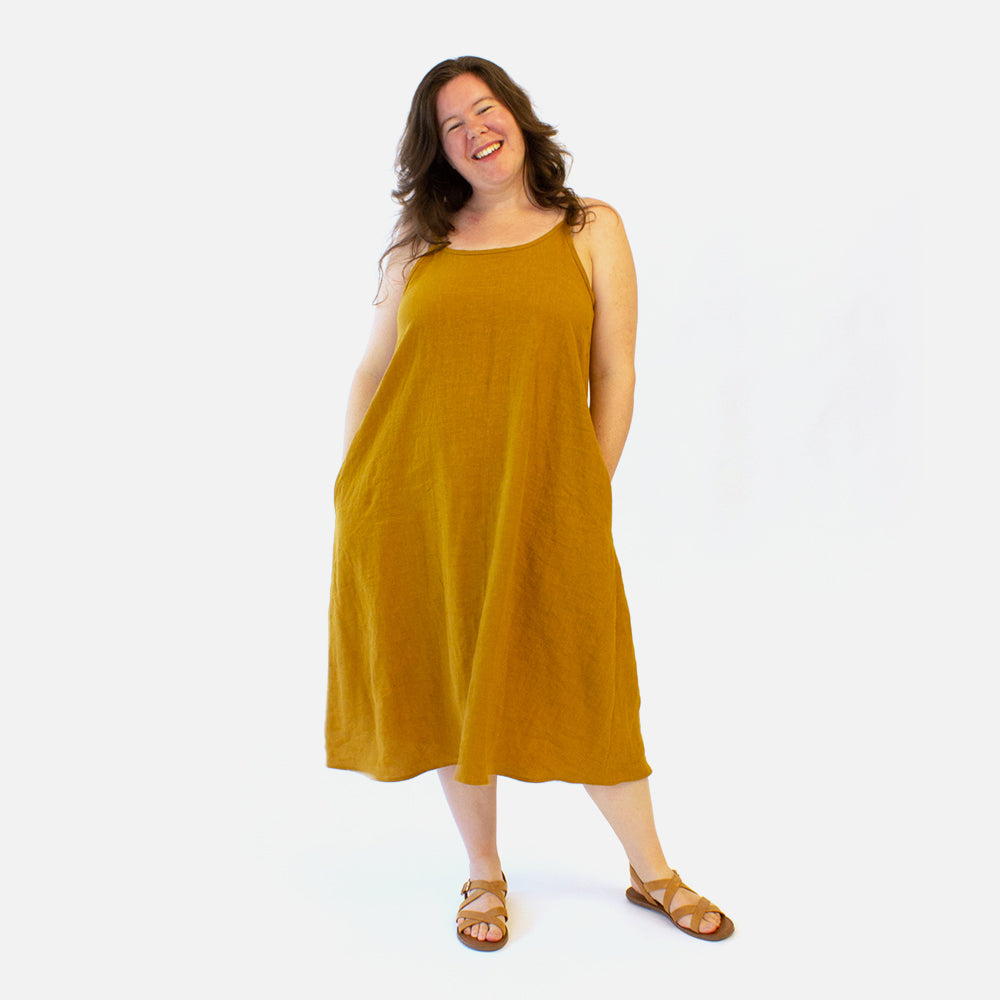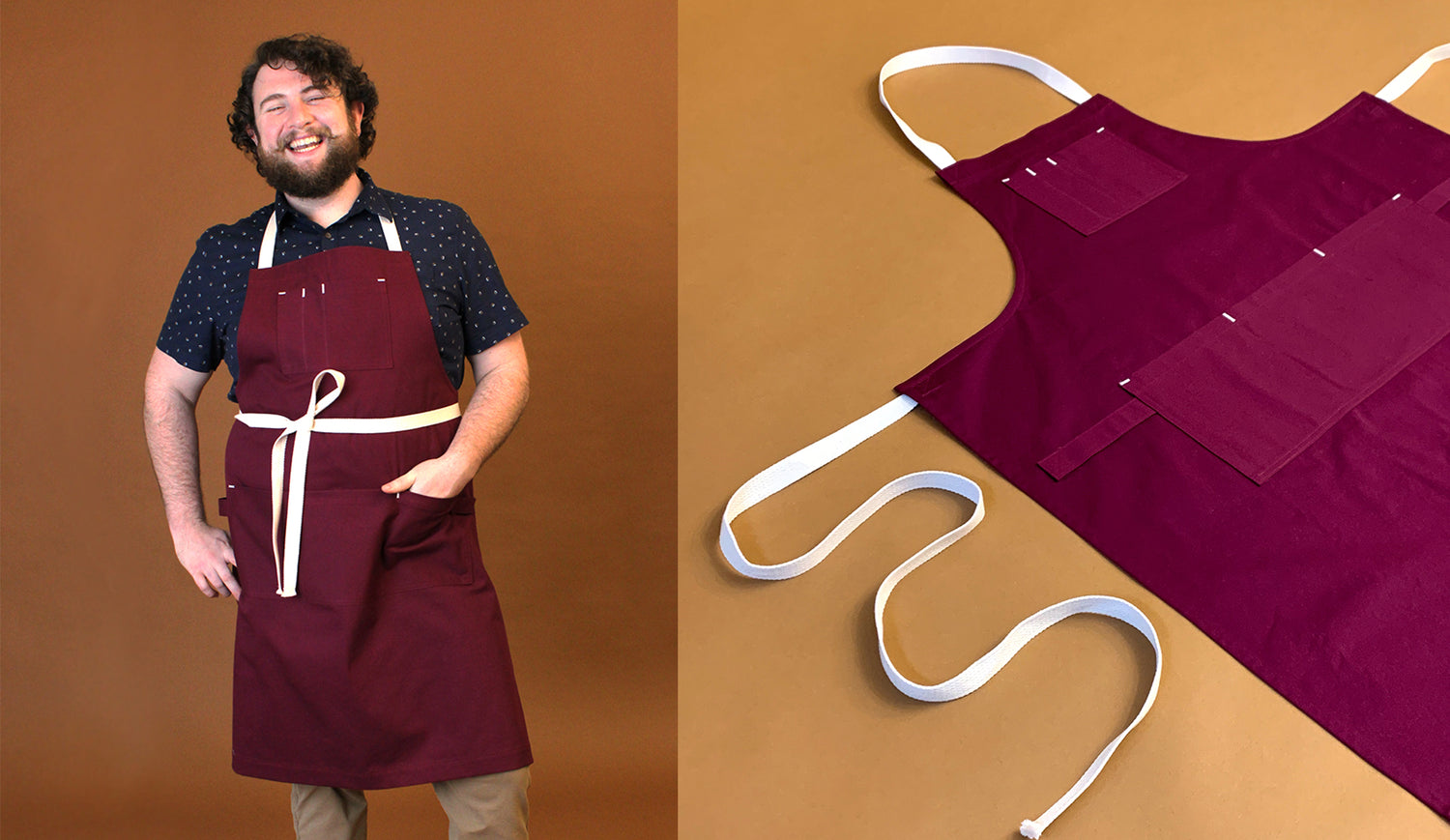
The Wildwood Jacket and Vest pattern does not have chest darts as it is designed to be gender inclusive. It is drafted to fit a variety of body types. When sewing for a bust, the pattern fits an A-D cup size range comfortably without adjustment. But what if you have a bigger cup size? Today we will show you how to add a dart to your Wildwood pattern by doing a Full Bust Adjustment (FBA).
Wildwood is on sale this week for 20% off!

How much should you adjust by?
First off, let’s determine how much of an adjustment you need to make.
The math:
(Your Full Bust Measurement – Full Bust Measurement of the size you want to make)/2
Example:
My full bust: 44” (112 cm)
My waist: 32” (81.5 cm)
My hips: 42” (106.5 cm)
According to my full bust measurement, I should make a size 16 or 18, but the rest of my measurements put me into a size 14. I can make the size 18 and have an oversized vest/jacket, or if I want a more streamlined fit, I can make a size 14 and do an FBA.
The full bust measurement for size 14 is 40” (102 cm), mine is 44” (112 cm)
44” (112 cm) - 40” (102 cm) = 4” (10 cm) difference
Following the equation above:
4” (10 cm) / 2 = 2” (5 cm)
Hence, I will need to adjust my pattern by 2” (5 cm) total.
How to do to an FBA (Full Bust Adjustment)
You will need the front (pattern piece 1 for the vest or 3 for the jacket) and the back (pattern piece 2 for the vest or 4 for the jacket), a marker/pen/pencil, ruler, tape, a couple of pins, and extra paper.
Start by tracing off the front piece onto a new sheet of paper. You don’t have to do this if you want to work on the original and don’t mind printing the pattern again if needed.
Draw the shoulder overlap lines by connecting the notches on the shoulders of both front and back pieces.

Pin the front and the back pieces together along the shoulder overlap line and hold the two pattern pieces up to your body. Try to line up the shoulder overlap line to your shoulder as close as you can. Find and mark where your bust “apex” is (it is right where your nipple is). Don’t worry about being 100% accurate, just do your best. Unpin the back from the front piece and set it aside. You won’t need the back piece anymore for the FBA.

Draw three lines as follows:
- Starting from the apex to the side seam, roughly where you think the bust dart would look best (red line).
- Starting from the armscye to the apex, and then vertically down, parallel to the center front (green line).
- Starting at the front and 5-6” (~12.5- 15 cm) up from the bottom, draw a horizontal line perpendicular to line #2 (blue line). Make sure this line is above the curved part of the hem!
There is no hard and fast rule on where exactly these lines have to be. Just try to make your lines resemble the lines below.

Using paper scissors and starting at the bottom of the pattern, cut line #2 up to the apex. Pivot at the apex and keep cutting to the armscye stopping at the seam line, 5/8" (1.6 cm) away from the edge. Starting from the armscye, cut into the seam allowances towards your cut line, making sure to leave a small paper hinge.
If you are adding a dart to the vest, you can still create a hinge, 3/8” (1 cm) away from the edge, to make it easier to rotate the pieces.
Starting at the side seam, cut line #1 almost all the way to the apex. Be sure to leave a paper hinge here as well! If you cut your hinge, don’t sweat it—you can just pretend it is there.
Completely cut through line #3.

Put a spare piece of paper underneath your pattern piece.
Before you start spreading the lines open, we need to know how much room to add. We calculated this above. In my example, I need to add 2” (5 cm), which will give us a total of 4” (10 cm) added across the whole front bodice. This is an example only and your number will likely be different.
Let’s get back to the pattern. Start carefully moving pieces B and C out to the side. You will be adding room right where you drew line 2. At the same time, start moving piece C down so that the hemline is staying true. This will create a gap where line 1 used to be and this is where the dart will eventually go.

The gap where line 2 was is most important. The sides of this gap should always be parallel and the width should be the number from the equation above. Once you are happy, tape pieces A, B and C in place.

Move Piece D into position so that it is the extension of the center front and is on the same straight line as piece C. Tape it down.

You will now have a dart-like shape on the side of the pattern piece, but it is not pointing at the right spot. It needs to be redrawn to point to your apex. Using a pen and a ruler, redraw the dart to point at the apex mark. (shown as line #4 in blue below).

Next, “back off” the dart point ~1” (2.5 cm) and redraw the dart again to the new point. We do this so our dart does not come to a point right on the nipple and draw attention to it. Make sure the dart legs are the same length and adjust as needed by adding some length to the shorter leg. Redraw underarm seam if necessary (it may have a bit of an angle in it—you want to smooth it out). Add a dart hat and admire your new dart!

Congrats! You just did an FBA on your Wildwood pattern!
We always recommend sewing a muslin when you make adjustments to a pattern. You can simply sew the front, back, and yoke for this pattern to test if the dart is in the correct place and is giving you the fit you desire. When making the Wildwood Jacket, add the sleeves to get an even better idea of the fit before you sew your final project!
We’ve got another blog post about how to sew this new dart on Wildwood. Because of the many layers of fabric and the quilting, there are some important considerations to make. You can check out that post here!
Don’t forget, Wildwood is on sale this week for 20% off!







